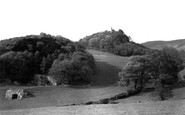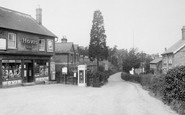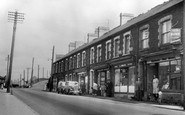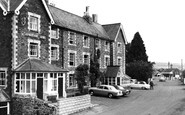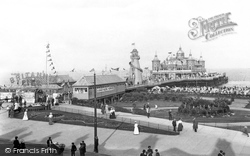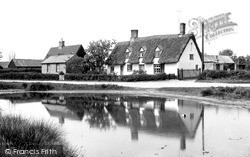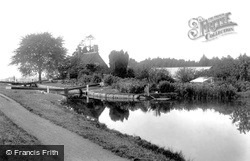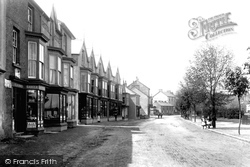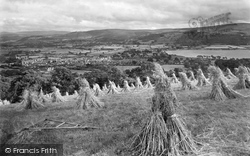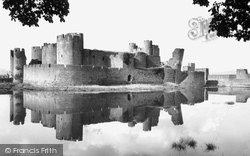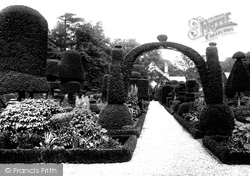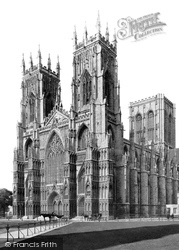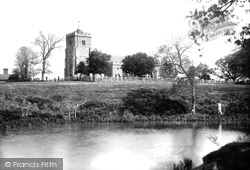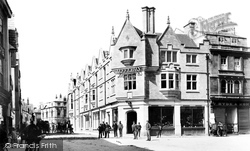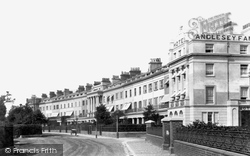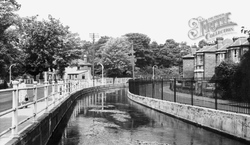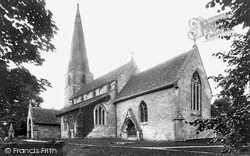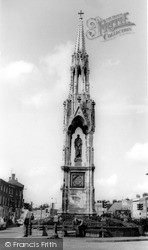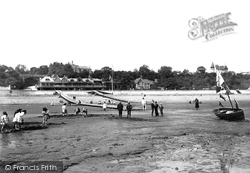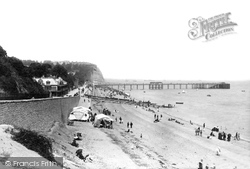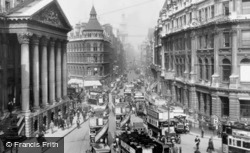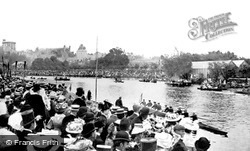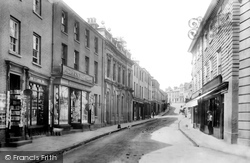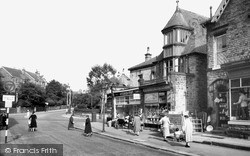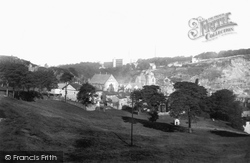Places
18 places found.
Those places high-lighted have photos. All locations may have maps, books and memories.
- Hythe, Kent
- Hythe, Hampshire
- Small Hythe, Kent
- Bablock Hythe, Oxfordshire
- Methwold Hythe, Norfolk
- Hythe, Somerset
- Hythe, Surrey
- Hythe End, Berkshire
- The Hythe, Essex
- Egham Hythe, Surrey
- West Hythe, Kent
- New Hythe, Kent
- Broad Street, Kent (near Hythe)
- Horn Street, Kent (near Hythe)
- Newbarn, Kent (near Hythe)
- Newington, Kent (near Hythe)
- Broad Street, Kent (near Hythe)
- Stone Hill, Kent (near Hythe)
Photos
360 photos found. Showing results 2,301 to 360.
Maps
101 maps found.
Books
10 books found. Showing results 2,761 to 10.
Memories
4,406 memories found. Showing results 1,151 to 1,160.
Schoolfriend Lived In Tremeirchion
I used to be friends with Lily Austin; she lived on a farm which you had to walk down a long driveway to. I was friends with her from school. Also I remember my great aunt called Mona, her mother in law ...Read more
A memory of Tremeirchion by
Childhood Memories
I was born in Nanty in 1947, I lived on High Street. My dad was Tom Bevan and I went to Nanty Infants School. I remember as a child playing down by the river with my friends and my mam shouting at me because I was getting ...Read more
A memory of Nantyffyllon in 1956 by
Scotland Hill School
I attended Scotland Hill School from 1940 to 1946, after which I moved to Crowthorne C of E School. I have many memories of Scotland Hill School, Mr Shanks the Headmaster did not take any fooling around, his cane ...Read more
A memory of Little Sandhurst in 1946 by
The Charles Family Home At 39 Cwm Road.
39 Cwm Road in 1946 The family home, at 39 Cwm Road, was on the ‘cellar side’, which was deemed to be an advantage, since the houses were three-storeyed and sported an extra kitchen, scullery and pantry, ...Read more
A memory of Waun Lwyd in 1946 by
One Summer
I worked as a 16 yr old in this hotel in 1960, I have lovely memories of the place. Also the hotel looks different to me now. We, the staff, lived in a bunglow at the end of the back garden. I think it was owned by Mr & Mrs ...Read more
A memory of Dulverton in 1960 by
Growing Up In Sutton
We lived at no 6 Greenfields, Sutton. My nan lived at four with my grandad Tom - in fact it was my family which helped forge Sutton village. I remember many families; Mr and Mrs Harland who ran the village ...Read more
A memory of Sutton by
Wood Hatch, Western Parade
This photo is of the shops in Western Parade, Woodhatch, Reigate. Also in the picture, partially obscured by the trees, is The Angel public house. Woodhatch is a suburb of Reigate, about 2 miles due south from the town ...Read more
A memory of Reigate in 1955 by
A Wartime Nursery School In Newbold On Stour
In 1944 I was three and was placed in a boarding nursery in Newbold. It was managed/owned by Miss Crott (or similar) and her sister. It must have been a large house with a big garden. One day ...Read more
A memory of Newbold-on-Stour by
A Day In Steelend
Getting up in the morning, before your mum & dad, meet your pals at the corner, head around Kilarnie Farm going to the River Devon to guddle some trout. We sometimes found a waterhen's or duck's eggs, so we would build a ...Read more
A memory of Steelend in 1956 by
Chinbrook Estate
I moved to the Chinbrook Estate in 1965 when I was 10 years old. When I was older I spent many an evening in the Chinbrook Public House, I can remember seeing Acker Bilk play there. As children we used to go to the Tarn, ...Read more
A memory of Mottingham in 1965
Captions
4,899 captions found. Showing results 2,761 to 2,784.
Hoardings advertise summer seasons by the Brothers Howard and Miss Ruth Vincent. Visitors could also attend a fashionable fancy dress ball.
It became a nature reserve in 1899, the first one to be set up by the National Trust. The thatched roofs are of reed harvested from Wicken Fen in the winter months.
The pattern created by the extending balance beams has been compared to the backbone of a huge reptile. This lock is on the edge of town, close to the old prison.
Note the three children by the tree on the right.
This nostalgic and peaceful late-summer view shows corn stooks above the little town by the lake whose Welsh name, Llyn Tegid, means 'beautiful lake'.
Here we see the castle after its restoration by the Marquis of Bute. The main residential block, including the great hall, was sited along the south side of the inner curtain wall.
The magnificent topiary gardens of Levens Hall, near Kendal, were laid out by the King's gardener Beaumont, who trained at Versailles, in 1692.
Begun during the reign of King John and finally completed in 1472, York Minster stands on a site previously occupied by the Roman praetorium and by Saxon churches; the earliest of these was a small wattle
This view is one not normally seen by the public, for it was taken in the Prebendal School grounds.
Struck by lightning in 1672, it was restored in 1862 by the architect David Brandon.
Much of the woollen industry, by which Cirencester prospered, was organised by the monks of the great abbey which was completed during the reign of Henry II.
This handsome crescent dates back to 1826 and was originally intended to be part of a seaside resort known as Anglesey, developed by the Marquis of Anglesey.
In 1838, the writer Robert Maudie observed: 'church and the village are beautifully situated, the former close by the bank of the river'.
Dating mainly from the 13th and 14th centuries, and with a lofty spire dating from the time of Agincourt, the church of All Saints was extensively restored in 1862 by the Reverend W H Lowder, who had
Designed by Sir George Gilbert Scott, who died before it was completed, the memorial cost just over £2,000 and was unveiled by the Speaker of the House of Commons, the Rt Hon Sir Bouverie Brand, MP.
To the right, a small vessel festooned with flags is left scuppered by the retreat of the waves.
By the 1870s, Robert Forrest knew that he could not stop the 'rabble' and their use of the beach, which he deemed 'not legitimate'.
Occupied by the Rous and later Brain families, much of what we view here beyond the artificial lakes is the architectural additions of c1850-60.
The facade is so hemmed in by the street and the buildings opposite that it could never achieve the visual impact its architects would have wished for.
Unfortunately, in 1936 it was demolished, to be replaced by the present elegant concrete bridge completed in 1942.
The top hats sported by the boys can still be seen, even if they are no longer generally worn for the rest of the year.
Mining profits attracted shops and service industries, all eager to cash in on the 40,000-odd tons of copper ore that the mine was producing annually by the early 1860s; by this time, the population had
Prices by the mid fifties had doubled on what they had been around 1946: a pound of sirloin cost 4s 2d, 3lb of flour 1s 3d, a dozen eggs would set you back 3s 10d and a pound of butter 2s 6d.
By the 1860s Bollington was thriving, but during the American Civil War the cotton towns of Lancashire, east Cheshire and north Derbyshire felt the effects of the Federal blockade of Confederate ports.
Places (18)
Photos (360)
Memories (4406)
Books (10)
Maps (101)

